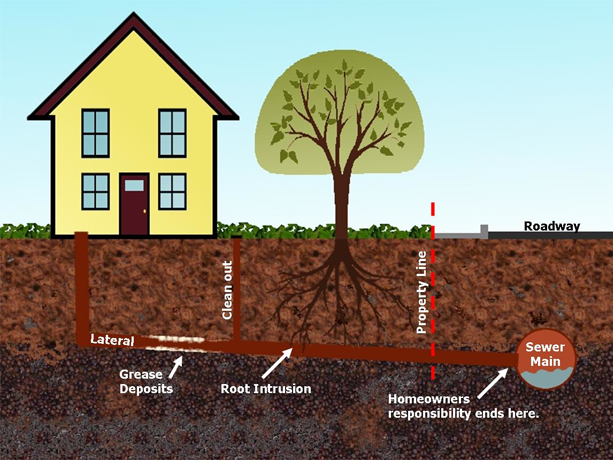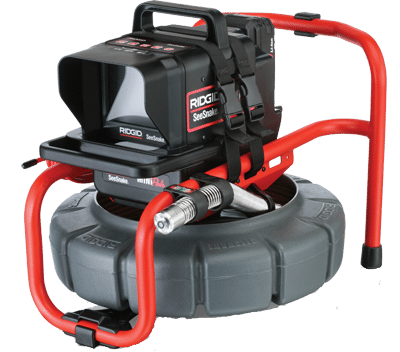Discovering Advanced Technologies in Sewer Line Inspection CT
Discovering Advanced Technologies in Sewer Line Inspection CT
Blog Article
Common Drain Line Issues and Their Solutions: A Property owner's Manual

Tree Root Intrusions
Tree root invasions are a typical and significant problem impacting drain lines. Sewage system pipelines, particularly older ones made of clay or other permeable products, offer an appealing target.
Early detection is critical in alleviating the impact of tree origin invasions. Regular examinations utilizing camera technology can recognize root visibility before it becomes a serious problem. As soon as discovered, there are numerous techniques to address the problem. Mechanical augers or rooter solutions can puncture the origins, providing a momentary fix. Nevertheless, for a more long-term solution, chemical root awesomes can be applied to prevent more growth within the pipelines. In severe situations, pipe relining or replacement might be necessary to recover the integrity of the drain line.
Carrying out preventative measures, such as planting trees far from sewage system lines and using root barriers, can minimize the risk of future invasions, consequently guarding the capability of your sewer system.
Pipe Corrosion
Corrosion in sewer pipelines is a widespread concern that can significantly jeopardize the stability and performance of a drain system. Generally occurring in metal pipes, such as cast iron or galvanized steel, deterioration outcomes from extended exposure to wetness, chemicals, and various other harsh representatives found in wastewater. In time, this process compromises the pipe walls, causing leakages, breaks, and at some point, pipeline failing.
The primary types of pipe corrosion consist of uniform corrosion, where the entire surface of the pipeline wears away equally, and local corrosion, such as pitting or crevice corrosion, which impact specific locations of the pipeline. Determining the very early signs of rust, such as stained water or unusual smells, is critical for prompt intervention.
Stopping pipe corrosion includes routine maintenance and assessments. Applying safety coverings, making use of corrosion-resistant products like PVC or polyethylene, and setting up cathodic security systems can substantially prolong the lifespan of drain pipelines. In cases where rust is currently comprehensive, trenchless pipeline recovery methods, such as pipe cellular lining or pipeline bursting, deal efficient solutions without the requirement for considerable excavation. Ultimately, positive administration and prompt repairs are important to mitigate the damaging effects of pipe deterioration on sewage system systems.
Obstructions and Clogs
Obstructions and clogs are amongst one of the most disruptive and common problems affecting sewer lines. These obstructions can emerge from a range of sources, including the buildup of debris such as hair, food, and grease fragments, in addition to the invasion of tree roots seeking dampness. With time, these materials develop, narrowing the pipe and at some point bring about finish obstructions that can create wastewater to support right into homes.
Precautionary measures are essential for alleviating the danger of clogs. Regular maintenance, such as regular hydro-jetting and making use of enzyme-based cleansers, find more info can help keep pipelines clear of debris. Home owners must likewise bear in mind what they deal with down their drains; preventing oil, coffee premises, and fibrous vegetables can significantly reduce the chance of blockages.
In extra severe cases, video assessment tools can be used to find and identify the problem, guaranteeing that the proper solution is applied effectively. Routine evaluations and timely interventions can help preserve the integrity and capability of sewer lines.
Leaking Sewer Lines
Beyond obstructions and obstructions, leaking sewage system lines present a significant concern for property owners and municipalities alike. These leakages can arise from various factors, consisting of pipe corrosion, changing soil, invasive tree origins, and use and tear with time. Left unaddressed, dripping sewer lines can create considerable residential or commercial property damage, promote mold growth, and pose major health risks as a result of the contamination of groundwater and soil.

Repair methods rely on the intensity of the leak and the problem of the sewer line. Small leaks might be settled with trenchless repair service techniques, such as pipeline lining or pipeline bursting, which are less intrusive and quicker to complete. In extra serious situations, traditional excavation and substitute of the affected pipe section might be essential. Consulting with a certified plumbing technician guarantees an exact diagnosis and ideal solution to mitigate the problem successfully.
Sewage System Line Bellies
When it involves sewer line issues, one specifically difficult trouble is the formation of sewage system line stomaches. A drain line tummy happens when an area of the pipe droops or dips, creating a low area where waste and debris can accumulate. This can bring about slow down water drainage, persisting blockages, and potential damages to the pipeline in time.
The sources of sewage system line tummies are varied. Poor installation methods, dirt erosion, ground settling, or shifts because of temperature modifications can all add to the development of these sags - sewer line inspection ct. Determining a sewer line stubborn belly usually needs a professional examination using a drain electronic camera helpful resources to pinpoint the exact area and level of the issue
Resolving a sewer line stomach frequently involves excavation to reach the damaged pipeline area. When accessed, the drooping part might require to be replaced or rearranged to guarantee proper slope and drainage. Sometimes, trenchless repair methods, such as pipe lining or pipe bursting, can be utilized to lessen disruption while resolving the concern.
Preventative steps, including normal inspections and making sure appropriate installment, can help mitigate the threat of drain line stomaches. Property owners should stay watchful for signs of water drainage issues and seek professional aid at the first indication of difficulty.
Final Thought
Finally, resolving usual sewer line issues such as tree origin visit the website intrusions, pipeline deterioration, clogs, leaking sewer lines, and sewer line stubborn bellies is essential for preserving a effective and functional system. Early detection through video evaluations and the application of both momentary and irreversible solutions can alleviate these concerns properly. Normal upkeep methods, consisting of critical and hydro-jetting tree positioning, additional add to the prevention of these issues, consequently making sure the long-term honesty of drain systems.
Corrosion in sewer pipelines is a widespread problem that can seriously endanger the stability and capability of a sewer system.When it comes to sewage system line issues, one specifically challenging problem is the formation of drain line bellies. A drain line belly happens when an area of the pipe sags or dips, producing a low spot where waste and particles can build up. Determining a sewer line belly generally needs an expert assessment making use of a sewer video camera to pinpoint the specific area and degree of the issue.

Report this page